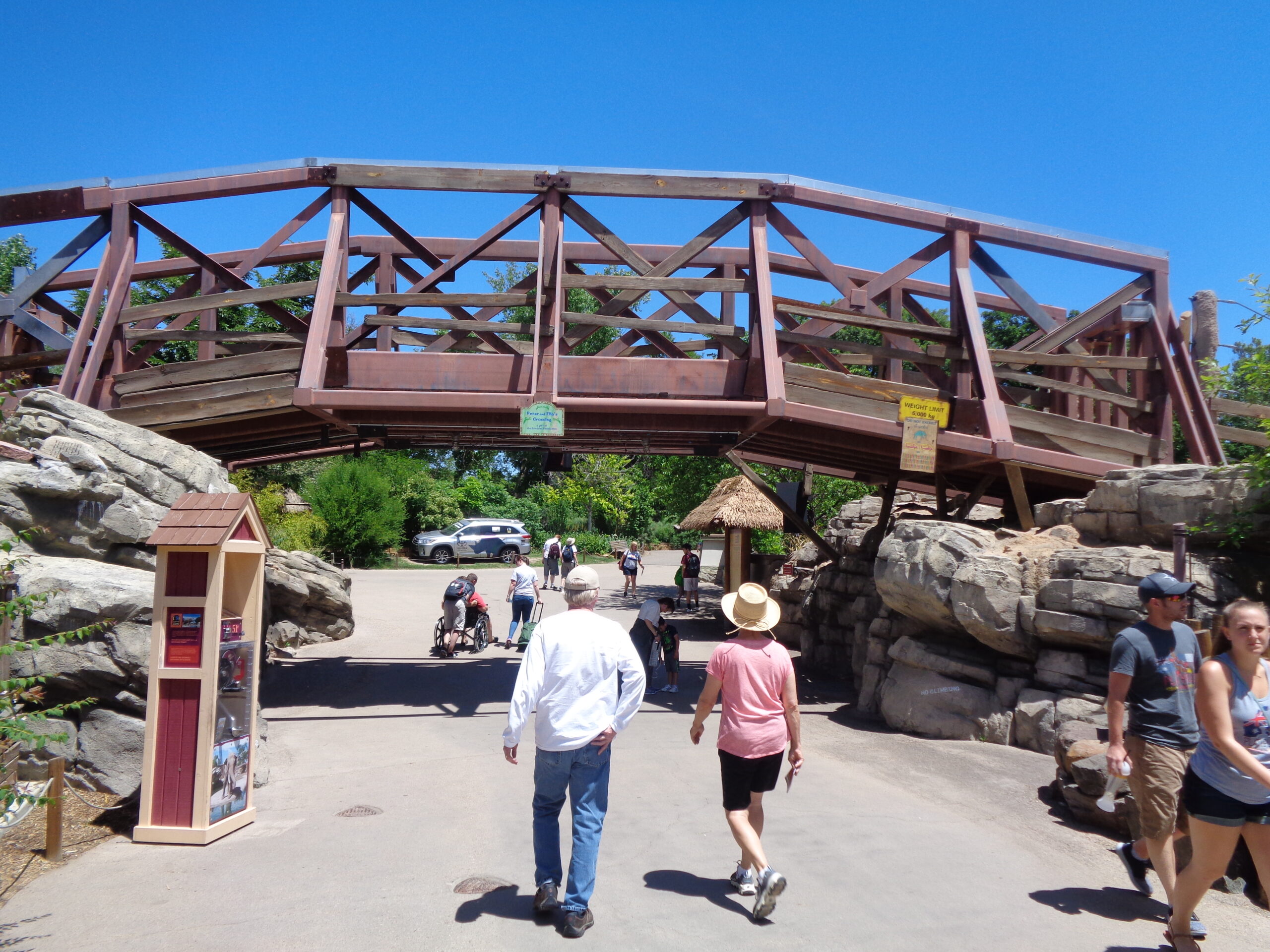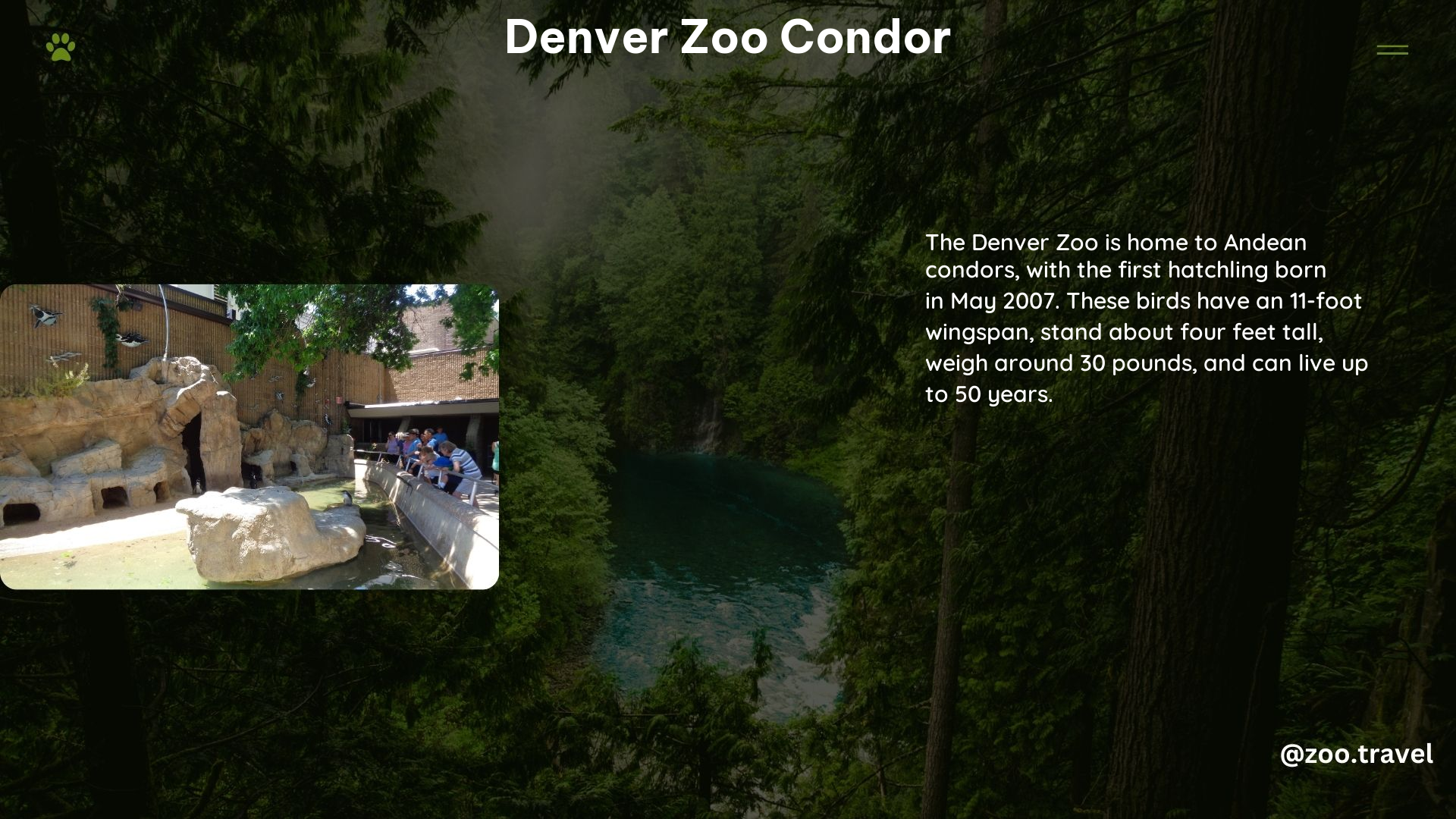The Denver Zoo is home to a remarkable species of birds – the Andean condor. These massive, majestic creatures are a sight to behold, and the zoo’s conservation efforts have played a crucial role in their preservation. In this blog post, we’ll delve into the fascinating world of the Denver Zoo’s Andean condors, exploring their habitat, breeding program, and the unique visitor experience they offer.
Habitat of the Denver Zoo Condors

The Andean condors at the Denver Zoo reside in a specially designed aviary near the “How Far Can You Jump” sign. This habitat is carefully crafted to mimic their natural environment, which typically includes wooded areas near water in North America. The aviary provides the condors with ample space to spread their massive wings and soar, giving visitors a glimpse into the birds’ natural behaviors.
Breeding Program and Conservation Efforts

The Denver Zoo is actively involved in a breeding program and conservation effort for the Andean condor. These birds were once on the verge of extinction due to hunting and other human activities, but the zoo’s dedicated efforts have helped to increase their population. The zoo has successfully hatched several Andean condor chicks, including one in 2007, which was later released into the wild in Colombia as part of a reintroduction program. This program aims to bolster the numbers of these magnificent birds and ensure their long-term survival.
Visitor Experience at the Denver Zoo
Visitors to the Denver Zoo have the unique opportunity to observe the Andean condors up close in their naturalistic habitat. The zoo’s aviary allows visitors to witness these birds in their element, promoting education and appreciation for the species. Seeing the condors’ impressive size, with wingspans reaching up to 11 feet, is a truly awe-inspiring experience that leaves a lasting impression on all who visit.
Additional Facts about the Denver Zoo Condors
- Andean condors can grow up to 30 pounds and live up to 50 years in the wild.
- They have a wingspan of 10-11 feet, making them one of the largest flying birds in the world.
- In the wild, they primarily feed on fish, but also eat small birds, rodents, snakes, and carrion.
- At the Denver Zoo, the condors are fed a diet of mice, rats, fish, and a specially formulated bird of prey diet.
Conclusion
The Andean condors at the Denver Zoo are a true marvel of nature, and the zoo’s dedication to their conservation is commendable. Visitors to the Denver Zoo have the unique opportunity to witness these magnificent birds up close, learning about their habitat, behavior, and the important role they play in the ecosystem. By supporting the zoo’s efforts and spreading awareness about the Andean condor, we can all play a part in ensuring the continued survival of this incredible species.
